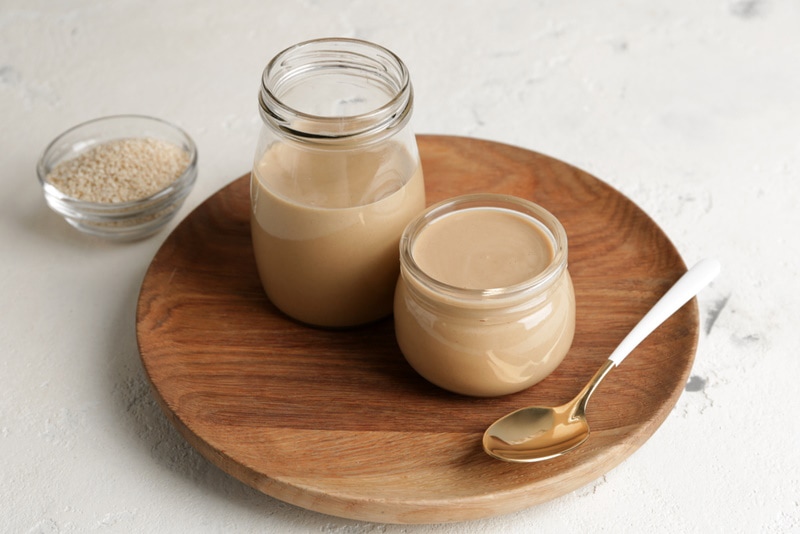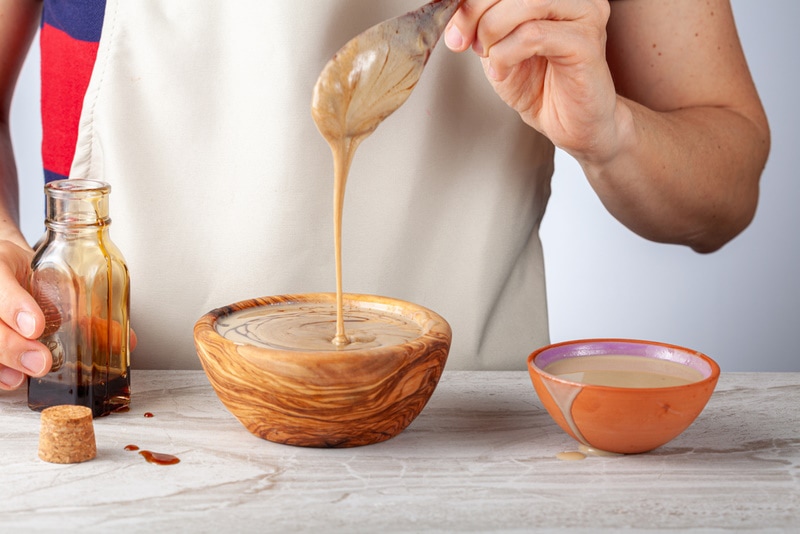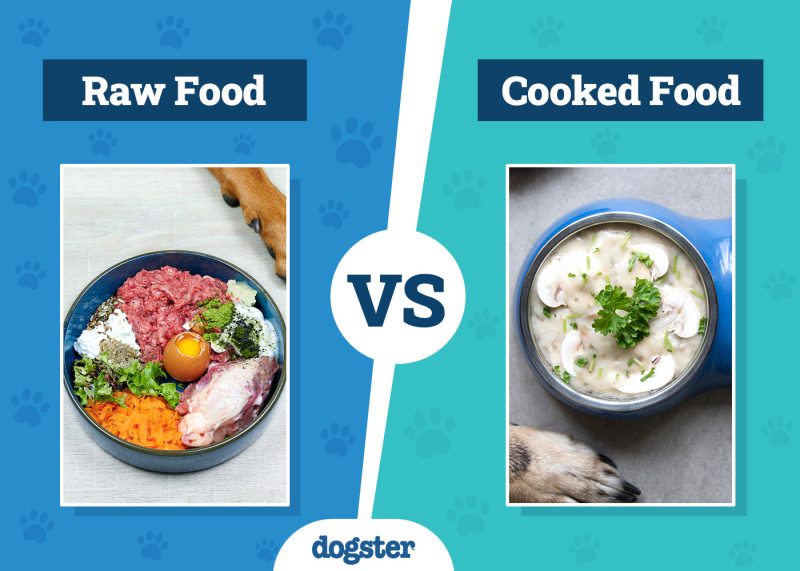In this article
Tahini is delicious, rich, and wholesome! You can find sesame seed paste in many cuisines worldwide, like those in the Middle East, Israel, China, Africa, Japan, Turkey, Iran, and Korea. In addition to providing several vitamins and minerals, tahini is a tasty way to add healthy fats and powerful antioxidants to your diet. But what about your dogs? Can your furry friend eat tahini?
The good news is that tahini is not toxic to dogs, and it is considered safe in small amounts. However, much like peanut butter, tahini is very high in fat, so if your pet has an upset stomach, it could aggravate the situation or even lead to pancreatitis.
In this article, we’ll examine this popular paste, explain its ingredients, and show you how to prepare healthy tahini treats for your dog.

What Is Tahini?
Tahini, known as “tahina” in some countries, is a ground sesame butter or paste used traditionally in many cuisines, especially in the Middle East and the Mediterranean. It is made of hulled sesame seeds, oil, and salt. The hulled sesame seeds are roasted, ground, and emulsified with unflavored oil to make a creamy, smooth seed butter that is pourable.
On the surface, you may notice that it is similar to peanut butter, but its taste is different. The nutty flavor of tahini is strong, earthy, and slightly bitter. There is a growing trend in the United States for using tahini as a baking ingredient to add a creamy texture and a subtle nutty flavor to banana bread, cookies, and tarts, as well as working as an emulsifier for dressings and dips.

Nutrition Facts
Tahini is rich in fiber, protein, and many critical vitamins and minerals.
One 15-gram teaspoon contains:
- Calories: 89
- Fat: 8 grams
- Protein: 2.5 grams
- Fiber: 1.5 grams
- Carbs: 3.2 grams
- Calcium: 64 milligrams
- Iron: 0.9 milligrams
- Phosphorus: 111 milligrams
- Copper: 0.2 milligrams
- Zinc: 1.5 milligrams
- Thiamine: 0.2 milligrams
- Manganese: 0.2 milligrams
Is Tahini Safe for Dogs?
Tahini is safe for dogs to consume, but only in small amounts. Because the paste is rich and fatty, overfeeding it can upset your dog’s stomach and result in gastrointestinal illness or trigger more severe conditions like pancreatitis. In addition, you may already know that fatty foods lead to weight gain, and weight gain causes many health problems in dogs. Therefore, moderation is the key.


Health Risks of Giving Tahini to Dogs
Tahini will become an unhealthy food source if you offer it as a staple rather than an occasional addition to your dog’s menu. Before giving your furry friend tahini, you might want to consider the following health risks:
Vomiting and Diarrhea
Fat content is the primary concern when it comes to feeding dogs tahini. Some canines struggle to digest fatty foods, especially if they have digestive issues. They may start vomiting, lose their appetite, and get diarrhea. However, this is an unlikely outcome from eating a small amount of tahini.
Weight Gain and Obesity
Tahini is very calorie-dense; one 15-gram tablespoon contains nearly 89 calories. For canines who are physically active, this might not be a problem, but excessive intake is problematic for those who lead sedentary lives.
Like humans, dogs will gain weight if they consume more calories than they burn. Obesity increases the risk of several diseases and reduces the dog’s overall quality of life. So, if your canine has weight issues, keep an eye on how much tahini they consume.

Too Much Salt
Salt is a tricky nutrient because it is beneficial in small doses but harmful in larger ones. Tahini from the store is too salty, which is a problem, particularly for dogs with kidney issues.
Sesame Seed Allergy
Last but not least, although it is not very common, some dogs are allergic to sesame seeds.

Important Considerations When Feeding Tahini to a Dog
Every dog needs a balanced diet that is nutrient-rich. Veterinarians advise against giving dogs too many treats, which should only account for 10% of their daily calories.
If this is your first time offering tahini to your dog, it’s best to start slowly. For example, if your canine is a medium-sized dog, try a half-teaspoon and wait 48 hours to see if any adverse effects develop. If your dog starts showing unexplained signs like vomiting, diarrhea, abdominal pain, inappetence, and abnormal behavior, tahini is unsuitable as a snack.
If you need to speak with a vet but can't get to one, head over to PangoVet. It's an online service where you can talk to a vet online and get the personalized advice you need for your pet — all at an affordable price!
Homemade Tahini Without Salt
You can either make your own tahini or buy it at the store. However, when using tahini as an ingredient for your canine’s treats, it’s best to prepare it at home because store-bought tahini is high in salt.
You only need two ingredients when making homemade tahini for your canine: hulled sesame seeds and unflavored oil. Salt is the third ingredient in the traditional recipe, but you should skip it because sesame seeds are already nutty and salty. Here’s the process:
Step 1: Toast the Sesame Seeds
Place sesame seeds in a large, dry saucepan over medium-low heat and stir continuously with a spoon until the seeds turn slightly dark and become fragrant.
Step 2: Grind Sesame Seeds Until Crumbly
After the sesame seeds have cooled, add them to the food processor bowl, secure the cover, and process until a crumbly paste starts to form.
Step 3: Add Oil and Blend Into a Smooth Cream
Add a few teaspoons of unflavored oil to blend into a smoother paste.


Final Thoughts
While tahini is not toxic to dogs and is made of primarily safe ingredients, the salt content might be excessive. Preparing a homemade version without salt will make it more dog-friendly. While tahini can be a way to provide variability to your dog’s occasional treat flavors, it is not necessarily a food that a dog needs to eat, especially considering that it is high in calories and mostly fat. However, if your dog eats a bit of tahini that drips from the spoon to the floor, there shouldn’t be a reason for concern.
See also:
- Can Dogs Eat Cucumber? Vet-Reviewed Nutrition Facts & FAQ
- Can Dogs Eat French Fries? Vet-Reviewed Nutrition Facts & FAQ
Featured Image Credit: Pixel-Shot, Shutterstock



















